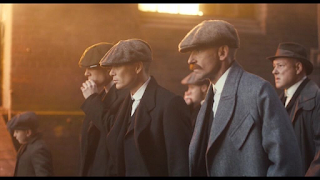Our task was to film and edit a person opening a door, crossing a room and sitting in a chair opposite another person, and they would exchange a few lines of dialogue, focusing on continuity.
Planning
For the short film we planned the shot types, the script and the camera movements. First we found a location (so we could draw a floor plan and work out the shots to fir the location) then made a floor plan to make sure we didn't break the 180° rule so the film was easy to follow and not confusing, in the floor plan we drew camera movements and where we would put the camera, and the path of the character. Next we chose a script, we decided on part of a scene from the film Pulp Fiction, we did this before making a storyboard so we could decide on the shot types and at what points they would be used during the dialogue. We created a storyboard next and drew out the different shot types we would use in the order we would use them. The planning helped us with the film as it meant we had a clear understanding of what and how we would be filming. We rehearsed each part of the film before we filmed it, however the 'actors' in the film didn't know exactly what they were saying because they didn't know their lines so one had to read from a script on their phone, this we could have improved.
Techniques
During the filming we used a variety techniques, one being the 180° rule, which we had to use to make the film easy to follow and understand, we managed to keep the rule throughout the film. Another technique we used was shot-reverse-shot for the conversation part of the film with varying angles, we used a low shot for one character and a variety of high angle shots for the other, influenced by Breaking Bad which uses angles to create power imbalances. We also used the rule of thirds for one shot where we also used a close up, we used a variety of shot types such as a long shot, mid shots and a close up. Another technique we used was nose room/lead room during the walking part of the film. When we edited the film we used colour correction to match the colours of the shots, as the background was green in one shot and yellow in all the others, we also used a dip to black at the end of the film to signify the ending.
Learning Points
I learned about the importance of using a tripod when filming to keep the shot steady, I also learned how to use the tripod to make high angle and low angle shots. The tripod was tilted slightly for some of the shots, so the shot looks wonky or is at a strange angle, next time I film I will make sure the shots are straight when they should be. I learned about how to storyboard the film and draw a floor plan which were essential to the planning of the film and helped when it came to the filming. I also learned about the different ways of filming someone walking from Peaky Blinders which uses shots of the characters' feet and uses techniques such as nose room, and the different ways of filming two people having a conversation from Breaking Bad and Coffee and Cigarettes, I learned about how to use the 180° rule for a conversation from these and power imbalances which I will use more in my next short film.
Improvements - If I were to do this piece again I would focus more on the angles of the shot as one of them was wonky, this would improve the continuity of the film, I would also either remove the noise of people chatting in the background or make it quieter in some of the shots because in some shots it was louder than others, if I were to do this it would improve the continuity. Also, I would use the rule of thirds more for the conversation part of the film and more shot types (e.g more close ups).



